Minor burn wound managment
Please note that the following webpage and chart include severe burn images that may cause distress.

The extent of burn depth and surface area will inform subsequent management. A minor superficial burn that can be managed in an outpatient setting must:
- Be superficial in depth and therefore be expected to heal without surgical intervention (check capillary refill and sensation)
- Small is surface area to be manageable by dressings that can be purchased over the counter or available in medical clinics.
- Pain is manageable on over the counter or prescription oral analgesic medication
For burns which are deeper, too large to manage in the outpatient setting or the pain is too intense to be managed on over the counter or prescription oral analgesia, consideration should be given to sending the patient to the local emergency department.
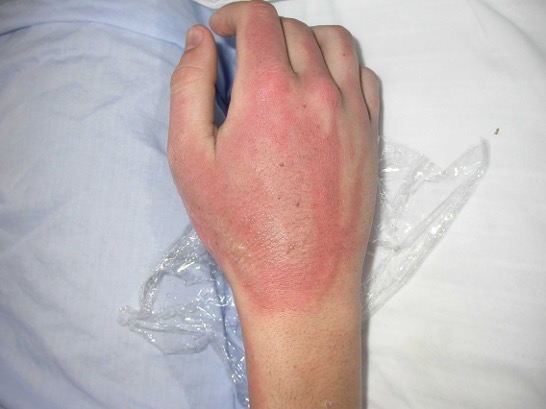
Epidermal burn (Erythema)
Assessment: damage to epidermis only. Skin is intact, no blisters present. Erythema. Red brisk capillary refill
Healing: Heal spontaneous within 3-7 days
Fixation/retention: not required
Follow up: should not be required
Initial dressing: simple moisturisers
Secondary dressing: not required
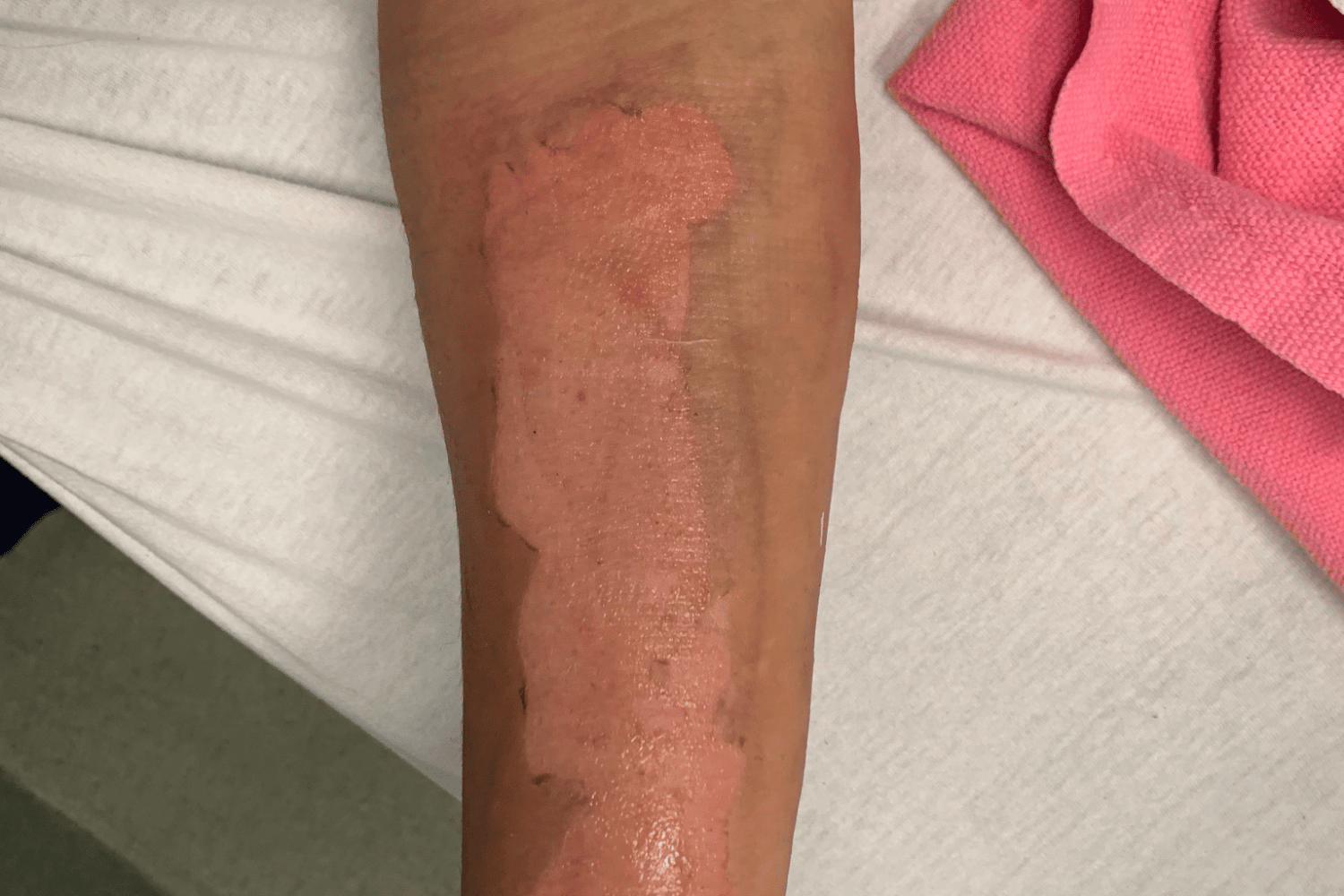
Superficial dermal burn
Assessment: damage to upper layer of epidermis. Pink blisters present or absent. Brisk capillary refill (under blister)
Healing: should heal within 7-10 days with minimal dressing requirements
Initial dressing: paraffin gauze, silicone dressings, silver products if contaminated
Secondary dressing: Dermal burns produce a significant amount of extrudate in the first 72 hours. Absorbant secondary dressings, such as gauze or foam, should be considered to manage.
Fixation/retention: Tubular or crepe bandage, tape
Follow up: in 24-48 hours by a GP or appropriate service. Early referal to a burns service is required for mid dermal, deep dermal and full thickness burns. Also, referral is recommended if the burn becomes infected or is slow to heal (>14 days).
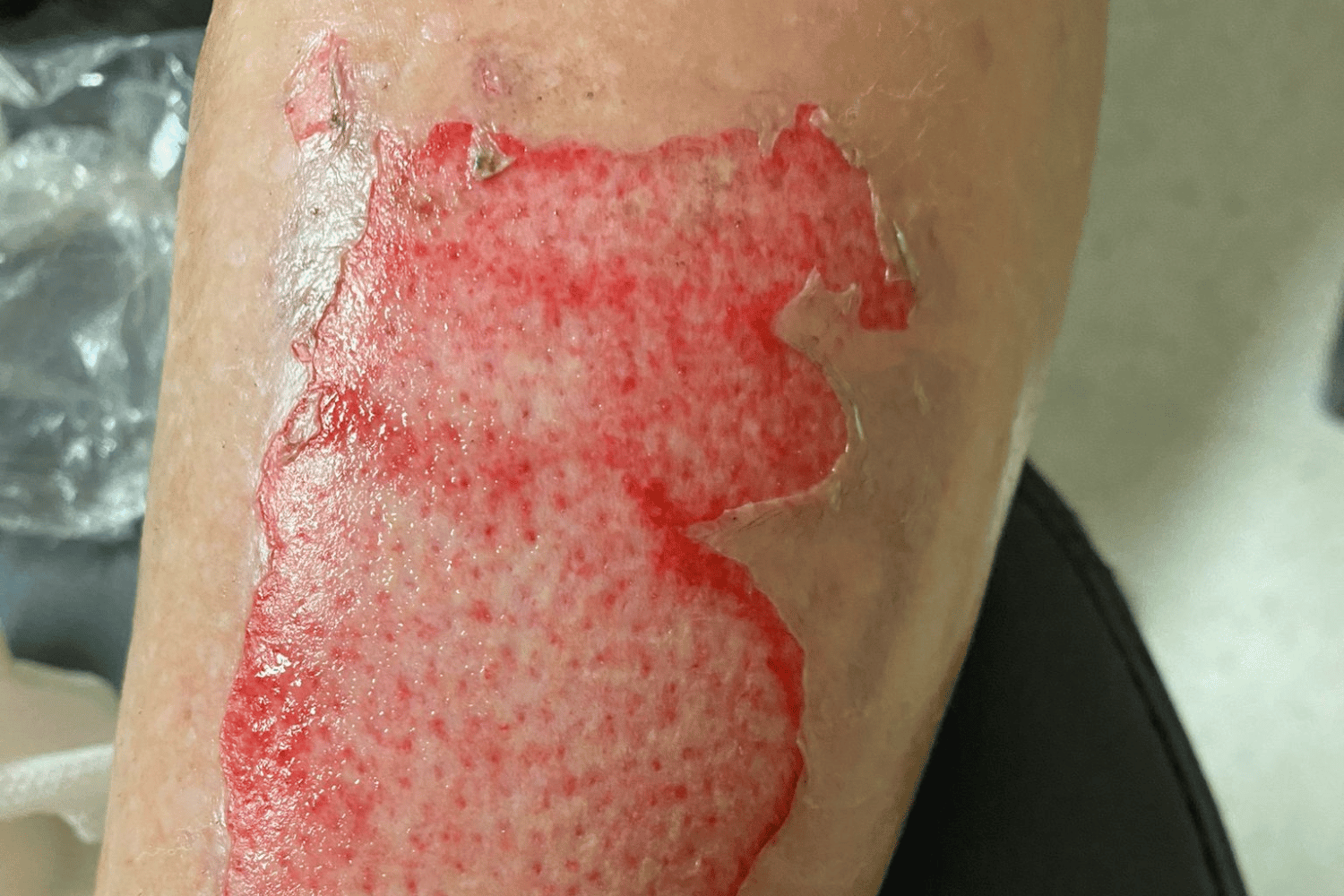
Mid dermal burn
Assessment: damage into mid dermis. Dark pink to red. Sluggish capillary refill
Healing: should heal within 14 days. Deeper areas may need surgical intervention and referral.
Initial dressing: silver products, antimicrobial, silicone dressings
Secondary dressing: Dermal burns produce a significant amount of extrudate in the first 72 hours. Absorbant secondary dressings, such as gauze or foam, should be considered to manage.
Fixation/retention: Tubular or crepe bandage, tape
Follow up: in 24-48 hours by a GP or appropriate service. Early referal to a burns service is required for mid dermal, deep dermal and full thickness burns. Also, referral is recommended if the burn becomes infected or is slow to heal (>14 days).
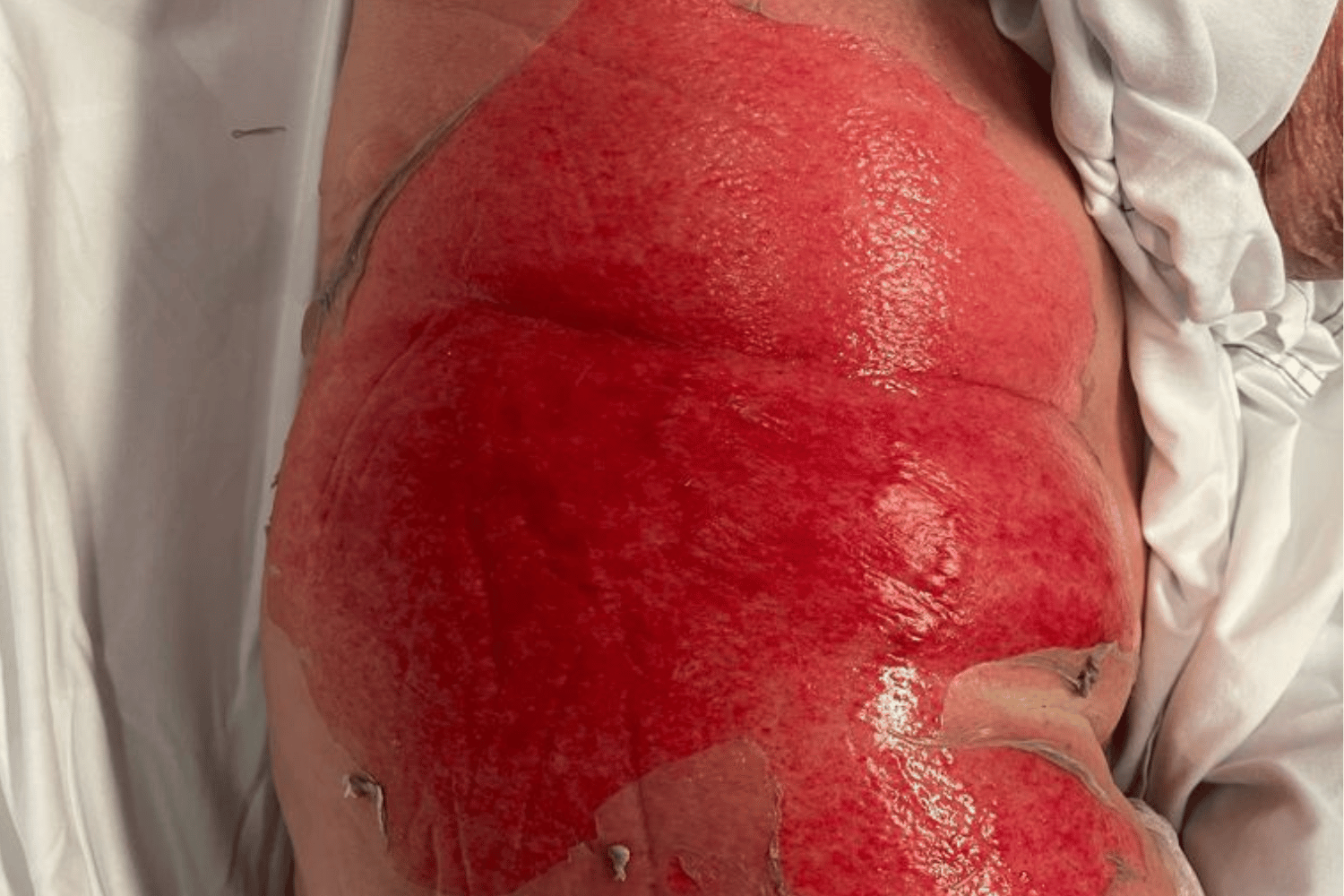
Deep dermal burn
Assessment: burns extend into deeper layers of dermins but not throught entire dermis. Blotchy red/white. Very sluggish/absent caparillary refill.
Healing: generally needs surgical intervention. Refer to specialist unit.
Initial dressing: silver products
Secondary dressing: Dermal burns produce a significant amount of extrudate in the first 72 hours. Absorbant secondary dressings, such as gauze or foam, should be considered to manage.
Fixation/retention: Tubular or crepe bandage, tape
Follow up: in 24-48 hours by a GP or appropriate service. Early referal to a burns service is required for mid dermal, deep dermal and full thickness burns. Also, referral is recommended if the burn becomes infected or is slow to heal (>14 days).
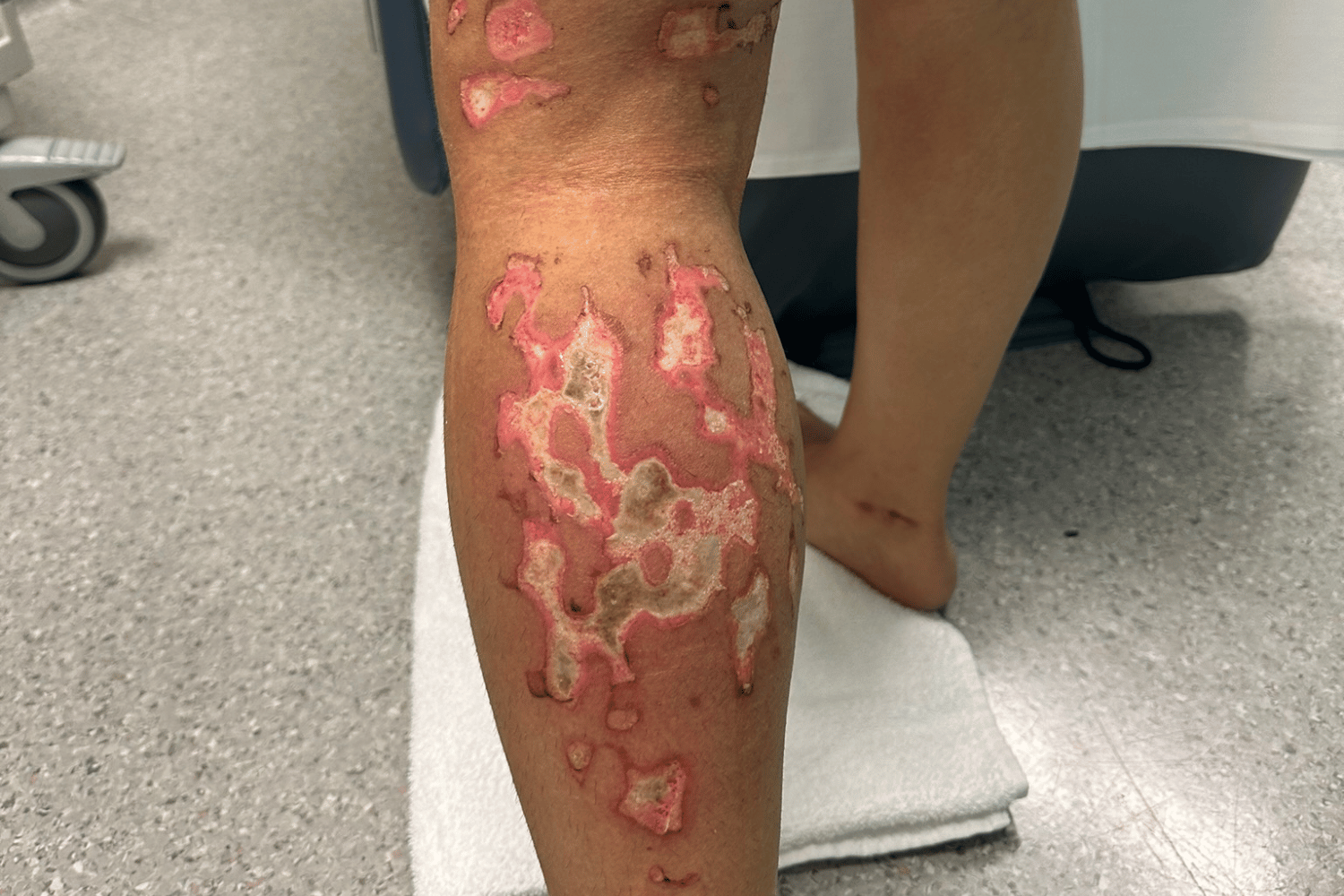
Full thickness burn
Assessment: destruction of entire dermins, sometimes with underlying tissue. White, waxy, brown, black or yellow. No capillary refill.
Healing: generally needs surgical intervention. Refer to specialist unit.
Initial dressing: silver products
Secondary dressing: Dermal burns produce a significant amount of extrudate in the first 72 hours. Absorbant secondary dressings, such as gauze or foam, should be considered to manage.
Fixation/retention: Tubular or crepe bandage, tape
Follow up: in 24-48 hours by a GP or appropriate service. Early referal to a burns service is required for mid dermal, deep dermal and full thickness burns. Also, referral is recommended if the burn becomes infected or is slow to heal (>14 days).
Wound Management Video
